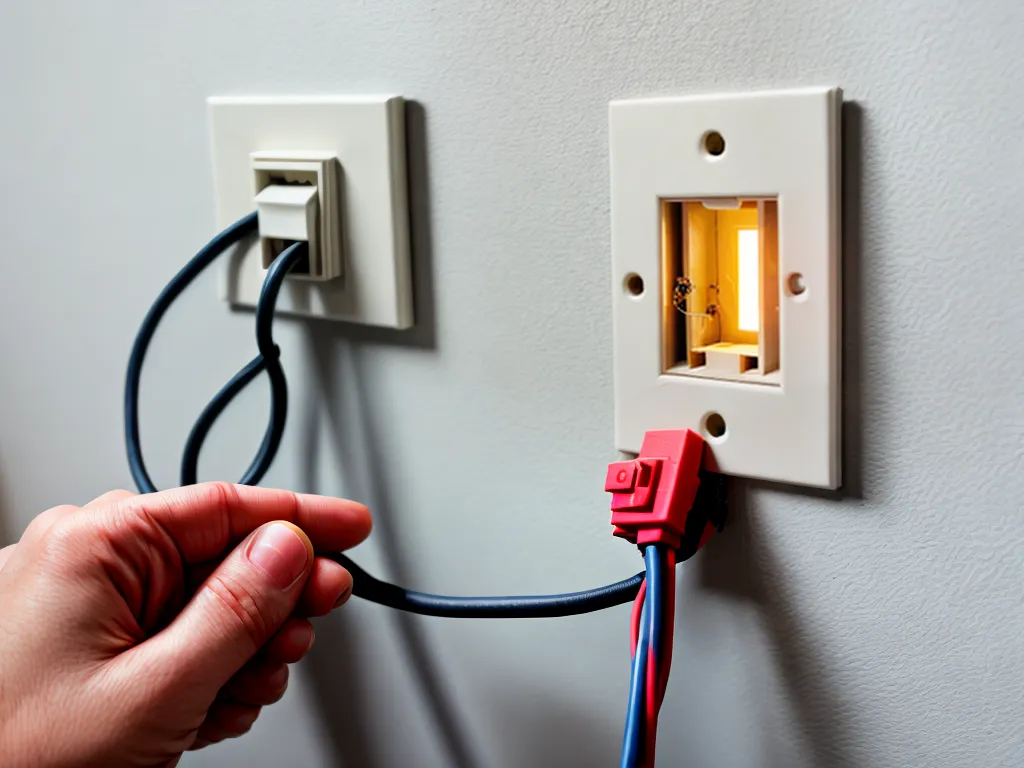
Wiring a light switch may seem daunting, but with some planning and the right materials, it can be done safely by a diligent DIYer. While there are easier ways to wire a switch, doing it the hard way allows me to understand the electrical system in my home better. In this comprehensive guide, I will walk through all the steps I take to wire a basic single-pole light switch the hard way.
Gather the Right Materials
Before I start any electrical project, it's essential that I gather all the materials I will need ahead of time. For wiring a single-pole light switch, here is what I need:
- Electrical tape - To insulate wire connections
- Wire strippers - To strip the insulation off the wires
- A voltage tester - To safely check for live wires
- A flathead screwdriver - To secure the switch and wall plate
- A ** Phillips screwdriver** - For the terminal screws on the switch
- Wire nuts - To join the wires together
- 14/2 NM electrical wire - The gauge I will use for the switch wiring
- A single-pole light switch - The key component for the project
- A wall plate - To cover the switch after it is installed
- Pigtails - Short wire lengths to connect the switch
I make sure I have all of these materials before I turn off the power and start working. As an extra precaution, I also wear insulating rubber gloves and safety goggles when doing any electrical work.
Turn Off Power at the Breaker
The most crucial safety step is to turn off the circuit breaker supplying power to the light I'll be installing the switch for. I locate the correct breaker in the electrical panel and switch it to the off position. To be certain it is dead, I test for power using my voltage tester. I also turn off the light switch I'll be replacing and make sure the light does not come on. I never work on a circuit that still has power flowing to it.
Remove the Existing Switch (If Applicable)
If there is already a light switch installed that I'm replacing, the next step is to remove it. I unscrew and take out the wall plate first using my flathead screwdriver. I carefully unscrew the switch from the electrical box and disconnect the existing wires. I use my voltage tester to double check that power is off before touching any wires. I set aside the old switch to reuse the wall plate and mounting screws if they are still in good condition.
Prepare the Wires
Now I'm ready to add my new electrical switch. But first, I need to cut the power source wire long enough to reach into the switch box. I measure and cut the wire, leaving at least 6 extra inches to allow room to work. I securely cap off the end I cut using a wire nut so it is safe.
Next I cut two pigtail wires, one for the live current and one for the switch leg, making them about 6 inches long each. I strip 5/8 inch of insulation from the ends of all the wires using my wire strippers. This exposes enough bare copper to make secure connections.
Connect the Wires
It's time to wire the switch into the circuit. Working inside the switch box, this is how I connect the wires:
-
I take the ground wire coming from the power source and connect it to the ground screw or green wire on the switch.
-
I take the live current pigtail and connect it to the live power source wire using a wire nut.
-
I connect the other end of the live pigtail to one of the screws on the side of the switch.
-
I connect the switch leg pigtail to the other screw on the side of the switch.
-
I connect the other end of the switch leg pigtail to the wire that runs to the light fixture.
I securely twist the wire nuts and tighten the terminal screws. I make sure no bare wire is exposed by wrapping electrical tape around each connection. I also verify the ground wire is securely attached.
Mount the New Switch
With all the wires securely connected, I mount the new switch inside the electrical box. I screw it in place making sure it is oriented correctly. I then screwed the wall plate back in place over the switch using my flat head screwdriver.
I carefully position the wires into the box so there are no loose wires protruding. This step is important to prevent wires from getting damaged or creating shorts.
Restore Power and Test
Once I have mounted the switch and checked my work thoroughly, I head back to the breaker box. I turn the breaker for the circuit back on to restore power.
I test the switch by flipping it on and off a few times. The light it is connected to should turn on and off with the switch. If it does not, I double check all my connections and fix any issues. If it still doesn't work, I consult an electrician to be sure it is wired properly.
With the light functioning as expected through the new switch, my work is complete! While it takes more time and care, wiring a light switch myself gives me confidence in completing basic electrical repairs safely.